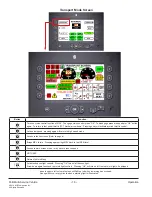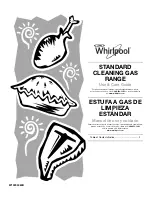
M-B Multi-Service Vehicle
• 8 •
Safety
©2014 M-B Companies Inc.
All Rights Reserved
GENERAL SAFETY
• This manual should be available during operation.
•
Extra copies of this manual are available for
purchase through M-B Customer Service.
•
To avoid serious injury or death, do not modify
equipment. Any modifications made to equipment
can be dangerous and can void equipment warranty.
•
Never defeat a safety device to make a task easier.
•
Never deface or remove factory-installed safety
labels. If a label ever becomes lost, damaged, or
illegible, report this condition to a supervisor and
obtain a replacement label from the Customer
Service department of M-B Companies, Inc.
•
Always wear proper apparel when operating
equipment; safety glasses, face shield or goggles,
ear protection, and dust mask. Tie hair back. Never
wear loose clothing or jewelry that could get caught
in moving parts.
• Never operate equipment with covers or guards
removed. Rotating parts can cause severe injury.
Keep hands, feet, hair, jewelry and clothing away
from all moving parts.
•
Understand the operation of hydraulic and
pneumatic controls.
• Understand which adjustments are operator and
which are maintenance adjustments.
•
Always shut OFF equipment when left unattended.
• Never operate or work around equipment if under
the influence of alcohol, drugs or medications.
Figure 1
•
Always use the safety link whenever transporting
or performing work on the vehicle. Closing the
safety link will prevent unexpected movement of the
articulation joint.
WARNINGG
Batteries give off flammable fumes that can
explode resulting in personal injury.
Electrolyte is an acid and can cause personal
injury if it contacts skin or eyes.
PRE-START-UP SAFETY
•
Install any covers or guards which may have been
removed for shipping purposes or maintenance.
• Before starting equipment, walk around equipment,
making a visual inspection that all safety devices
are properly installed and secured.
•
Check that all hardware, fasteners, hydraulic fittings,
etc. are in good condition and properly fastened.
Replace any fatigued or damaged items with proper
replacements.
• Personnel who are not required to be in the
work area should be kept away. Never start the
equipment unless you are absolutely certain that
everyone in the area is clear of the machine and
aware it is being started.
•
Follow the manufacturer’s recommended start-up
procedure.
PRESSURIZED SYSTEMS SAFETY
•
Do not disassemble a pressurized system unless
properly trained and equipped with adequate
tooling.
•
Familiarize yourself with the proper method of
relieving pressure from pneumatic or hydraulic
systems. Never perform maintenance on, or
disassemble, pressurized systems without first
locking out power to these systems and then
relieving pressure to them.
•
Oils and fluids can be very hot under pressure.
Use caution and allow the system to cool before
beginning maintenance work.
•
Never operate or pressurize one of these systems
with worn or damaged components. Replace hoses,
fittings, valves or other components which appear
defective.
•
Never adjust pressurized systems beyond
recommended levels to achieve higher operating
pressures.









































